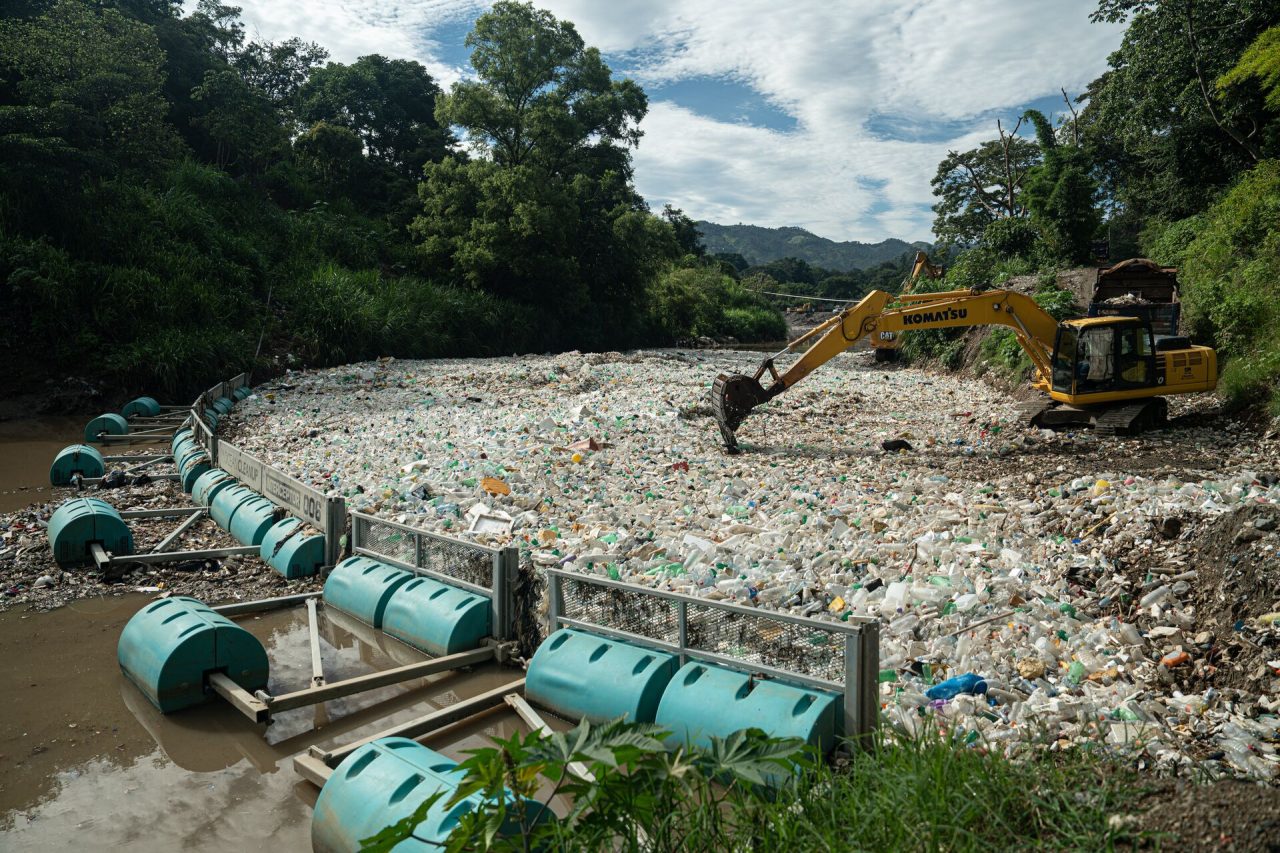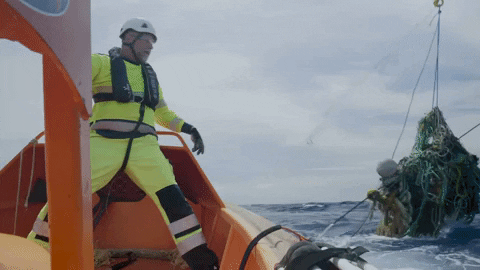Do you have any general information available regarding marine life observations and incidental catch?
To understand the environment where we operate, we continuously monitor and log marine life during transit to and operations in the GPGP. This is done mainly in two ways: 1) wildlife monitoring around and inside the system by Environmental Observers; 2) analysis of marine life caught in the system along with plastic (incidental catch). Below we describe the main results of these monitoring efforts.
- Wildlife monitoring by Environmental Observers (EOs): during transit and operations, the EOs monitor the surrounding area during daylight. When the system is being towed, the EOs also observe underwater cameras installed in the Retention Zone 24 hours a day. Highlights of these observations include over 8,300 observations of large marine animals (megafauna), most of which were not impacted by the system. This included almost 5,000 observations of marine mammals, including several species of whales, dolphins, porpoises and porpoises, as well as some records of seals and sea lions. Additionally, over 3,300 birds were recorded, including land and sea-based species. 50 sea turtles (mainly loggerhead and green turtles), 38 ocean sunfish (one of the largest bony fish in the world), and 56 sharks (blue, great white, oceanic whitetip and whale shark) were also observed.
- Incidental catch analysis: in every extraction, the marine life that was removed along with the plastic is separated for identification, counting and weighing, in order to better understand our impact on the local environment, and inform our management plans. Highlights of this incidental catch analysis are:
- Primary incidental catch (i.e., animals that were freely swimming when captured by the system) corresponded to a bycatch to plastic ratio of 0.6% – that is, over 99% of what we catch is plastic. Most of this bycatch was composed of small bony fish commonly associated with reef environments, such as sergeantfish and blennies.
- Secondary incidental catch (i.e., animals that were alive but associated with or entangled in plastic when captured by the system) corresponded to 0.03% in relation to plastic catch and was composed mostly of gooseneck barnacles and small crabs.
- Tertiary incidental catch (i.e., animals that were already deceased when entering the system) corresponded to 0.01% in relation to plastic catch, and was composed mainly of the remains of seabirds and sea turtles (mostly unidentified due to advanced decomposition).
The data from these monitoring efforts are currently being compiled in a scientific paper describing the biodiversity of the Great Pacific Garbage Patch, which will be published open access along with its database. This will allow other researchers to access this data and conduct further research on the general occurrence and distribution of marine life, and ultimately contribute to conservation efforts – including of endangered species.

